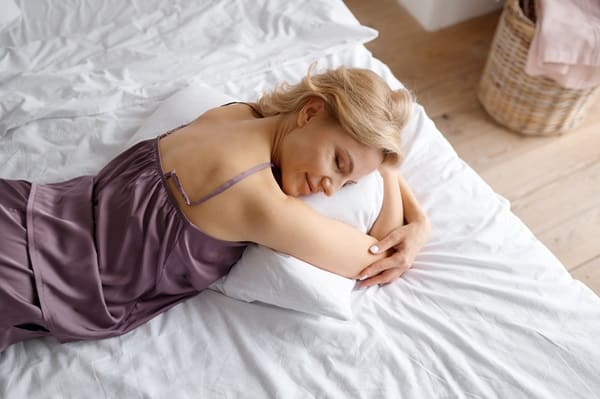Sleep is not just a luxury; it’s a necessity for overall well-being. From mental health to physical stamina, the quality of sleep one gets significantly impacts various aspects of life. However, many people don’t realize that the position in which they sleep can either enhance or diminish the quality of their rest. This article explores the best and worst sleeping positions, examining how they affect health issues like back pain, sleep apnea, and digestion. By the end of this read, you will gain valuable insights into how different positions can either be a boon or a bane for their sleep quality.
Contents
The Importance Of Sleep Position

The position you assume during sleep is not merely a matter of comfort but can have far-reaching implications on overall health. For instance, certain positions may alleviate back pain, while others could exacerbate issues like sleep apnea or acid reflux. The spine’s alignment, ease of breathing, and stress on joints are all influenced by how one positions oneself during sleep.
Understanding the significance of sleep position becomes crucial when considering the long-term impact. A poor sleeping position can lead to chronic health issues, disrupt sleep patterns, and even affect mental well-being. Therefore, it’s not just about getting eight hours of sleep; it’s also about ensuring that those eight hours are spent in a position that maximizes health benefits.
Factors To Consider When Choosing A Sleep Position

Choosing the right sleep position is not a one-size-fits-all scenario. Several factors, such as age, existing health conditions, and even personal comfort preferences, come into play. For example, older adults may find relief from joint pain in certain positions, while those with respiratory issues may need to avoid positions that obstruct airflow.
Another crucial factor is the sleep position of one’s partner. Sometimes, a couple may need to compromise or adjust their positions to ensure both parties get quality sleep. For instance, switching to side-sleeping may benefit both individuals if one partner snores loudly while sleeping on their back.
The Supine Position (Back Sleeping)

Sleeping on your back, also known as the supine position, is often recommended for various health benefits. This position naturally aligns the spine, reducing the risk of back and neck pain. It also minimizes the chances of developing pressure sores and can even reduce acid reflux, provided the head is elevated sufficiently.
However, the prone position is not without its drawbacks. It can exacerbate snoring and, in some cases, worsen sleep apnea. The gravity pull on the tongue and soft palate to the back of the throat can obstruct the airway, making this position less ideal for those who suffer from these conditions. Therefore, while it may be perfect for some, it is not universally suitable.
The Lateral Position (Side Sleeping)

The lateral or side-sleeping positions is one of the most commonly adopted sleep postures, and for a good reason. It is particularly beneficial for reducing snoring and is often recommended for mild sleep apnea sufferers. The lateral position can also aid digestion, thanks to the natural alignment of the stomach and esophagus, which minimizes reflux.
However, side-sleeping is not without its cons. Prolonged pressure on one side can cause shoulder pain and wrinkles due to the constant friction between the face and the pillow. Additionally, if the spine is not aligned correctly, it could lead to back pain over time. Therefore, while side-sleeping has its merits, it’s essential to be mindful of these potential drawbacks.
The Prone Position (Stomach Sleeping)

Sleeping on the stomach, known as the prone position, is often discouraged by healthcare professionals. One of the few benefits of this position is that it may reduce snoring by keeping the upper airways more open. This could be a temporary solution to moderate snoring issues for some people.
However, the drawbacks of stomach sleeping far outweigh the benefits. This sleeping positions can put significant stress on the spine, leading to neck and back pain. Turning the head to one side can also strain the neck muscles, leading to discomfort or chronic pain over time. Therefore, this sleep positions is generally not recommended for long-term use.
The Fetal Position

The fetal position, where one sleeps curled up with knees drawn towards the chest, is a common choice for many. This position can be particularly beneficial for pregnant women, as it improves circulation to the fetus. It’s also often recommended for people with lower back pain, as it allows the spine to maintain a natural curve.
However, the fetal sleeping positions is not without its downsides. Curling up too tightly can restrict breathing and cause discomfort in the hips and knees over time. It can also exacerbate arthritis symptoms due to the bent posture. Therefore, if one chooses to sleep in this position, keeping a more relaxed form is advisable to mitigate these risks.
The Log Position

The log sleeping positions involves sleeping on one’s side with both arms down by the side. This position is excellent for maintaining a straight and natural spinal alignment, which can benefit those suffering from back pain. It also keeps the airways open, making it a viable option for mild sleep apnea sufferers and those who snore.
However, the log position can sometimes numb the arm due to reduced blood flow and nerve pressure. It may also contribute to shoulder discomfort if one’s weight is not distributed evenly. Therefore, while the log position has advantages, it’s essential to be aware of its potential downsides and adjust as needed.
How To Transition To A New Sleep Position

Changing your sleeping positions can be a challenging but rewarding endeavor. The first step is to identify the need for a change, whether due to a medical condition, discomfort, or other reasons. Once the need is established, one can begin the transition by gradually spending more time in the new position each night.
Pillows can be a great aid in this transition. For example, a pillow between the knees can make side sleeping more comfortable, while a wedge pillow can elevate the upper body for back sleepers. It’s essential to give oneself time to adjust and to consult healthcare professionals if any issues arise during the transition.
The Bottom Line
The importance of sleep positions in determining the quality of one’s rest cannot be overstated. From spinal alignment to respiratory health, how one sleeps significantly impacts various aspects of well-being. While there is no one-size-fits-all answer, understanding the pros and cons of each position can guide individuals in making an informed decision tailored to their needs. Experimenting with different positions and making gradual adjustments can pave the way for better sleep and, by extension, a healthier life. Therefore, it’s not just about the quantity of sleep you get, but also the quality of your sleeping position can significantly influence.


